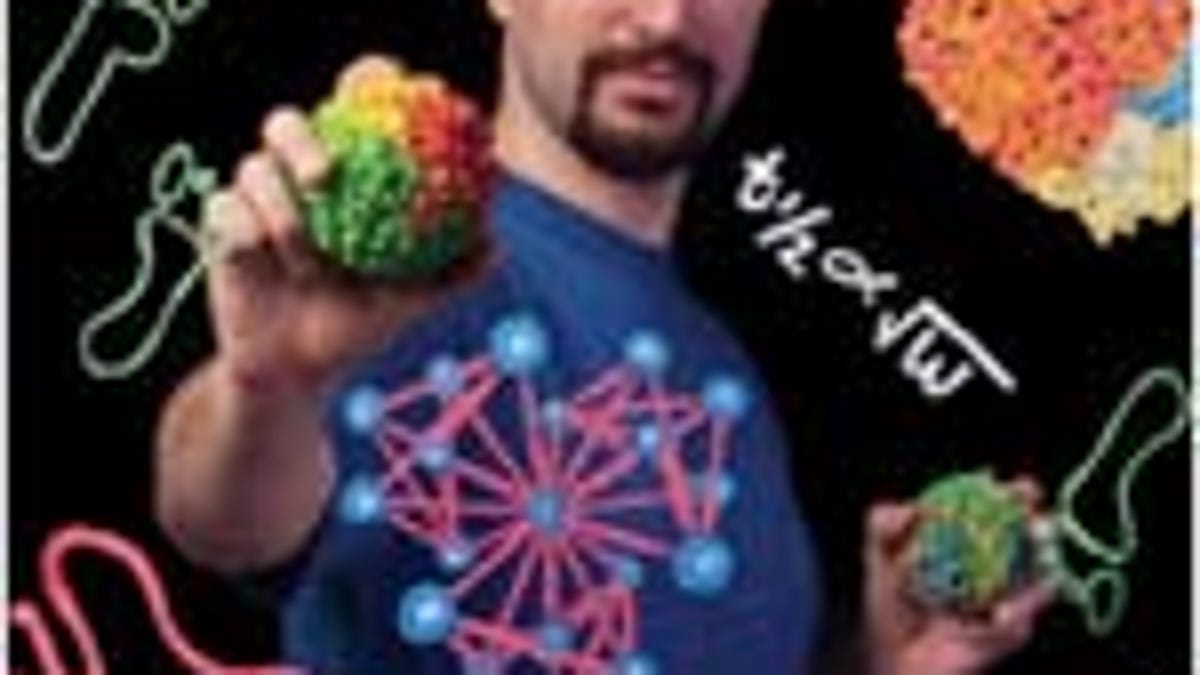Lemelson-MIT prize goes to man of many talents
Award winner Erez Lieberman-Aiden has developed breakthroughs in such areas as genetics, sensor technology, applied mathematics, and even evolutionary linguistics.

This year's Lemelson-MIT Student Prize has gone to a man who has his intellectual fingers in the pots of biotechnology, genetics, sensor technology, applied mathematics, and even evolutionary linguistics.
Erez Lieberman-Aiden, graduate student at the Harvard-MIT Division of Health Sciences and Technology, has been awarded the 2010 Lemelson-MIT Student Prize. His body of work to date includes inventing a 3D mapping tool and using it to discover new info about the inner workings of the human genome, developing a sensor-laden sneaker to assist the elderly, and co-developing a mathematical method for tracking widespread and complex evolutionary changes in things such as language, cancer, organisms, and social networks.
Lieberman-Aiden co-developed the "Hi-C" method, a system for mapping whole genomes in three dimensions, which enabled him and his team to make two significant breakthroughs in understanding how the human genome operates.
Using the Hi-C method, Lieberman-Aiden, along with UMass Medical School postdoctoral student Nynke van Berkum and others, found that the human genome is compartmentalized into active and inactive components in which individual genes are turned on and off as needed by interweaving chromosomes.
"When they examined this process more closely, they found evidence that the genome adapts into a never-before-seen state called a fractal globule. This allows cells to pack DNA extraordinarily tightly without knotting, and to easily access genes when the information they contain is needed," according to a statement from the Lemelson-MIT Program.
But the prize, which goes to the individual and not a particular project, is not for his work in genetic breakthroughs alone. Lieberman-Aiden has invented the iShoe, a shoe containing sensors that can detect and warn of deteriorating balance in elderly people. The iShoe, currently in clinical trials, could be used to prevent serious falls resulting in broken hips, a common cause of death for the elderly.
Lieberman-Aiden has also co-developed with Martin Nowak, a Harvard University mathematics professor, the "evolutionary graph theory," a mathematical method for tracking and predicting evolutionary changes in everything from the natural word to habits among populations. It has led to work, along with other professors and teams, in following the evolution of human language.
"They showed that, like radioactive atoms, irregular verbs have a half-life and that the half-life of a verb is proportional to the square root of its frequency," according to the Lemelson-MIT Program.
The prize for this work is as much about prestige as it is about the $30,000 monetary award. The Lemelson-MIT Program student prize, which was established in 1994, recognizes science or technology achievements with the potential to improve lives in the U.S. or underdeveloped nations.
The Lemelson Foundation, which has given over $150 million to date to research, was founded by Jerome and Dorothy Lemelson. Jerome Hal Lemelson was the prolific inventor and patent holder known as much for his patent lawsuits and promotion of inventors' rights, as for his impressive list of technological innovations.

